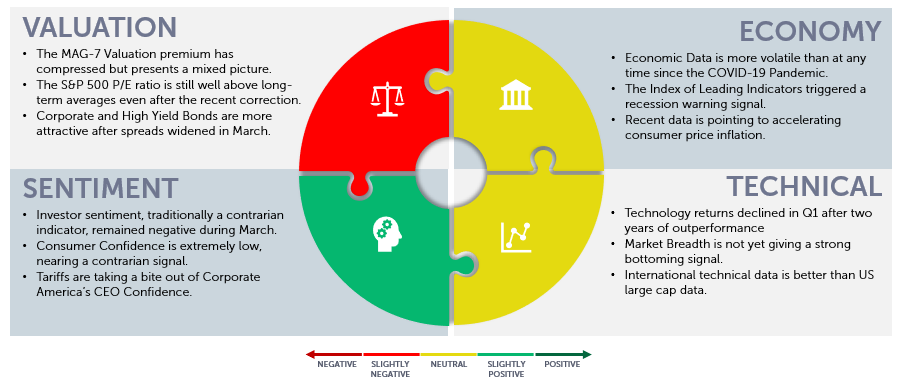
Key Events: Art of the tariff deal
Trump’s tariff about-face on Wednesday triggered chaos in treasury bonds as a levered hedge fund strategy suffered losses[1] which roiled markets.
Inflation data came in soft, but inflation expectations rose to a highest in 40 years[2] as the tariff drama – particularly the escalating tensions with China – superseded other events this week.
Market Review: Bonds break bad
Unwinding of levered trades caused bond losses. After a horrid start to the month stocks, however, had one of their strongest days on Wednesday – the S&P 500 was up 9.5%, the largest one-day gain since 2008.
The sharp turnaround in stocks carried through with solid gains for US stocks; international stocks lagged on fears of tariff repercussions. Gold hit new highs as uncertainty increased safe-haven demand.
Outlook: Snow white and the seven tariffs?
Trump 2.0 has been received as poorly as the recent Cinderella remake; plot changes have been panned by audiences and critics alike. Trump tweeted about the stock market over 150 times in his first term; the reboot features his suggestion that we need to ‘take our medicine’ in the short term.
This analogy both illustrates why Trump has roiled the market so much and provides a path forward. If the event – tariffs – triggers a recession, it’s the resolution of those tariffs that will end it and allow the stock market to recover.
We can’t predict what Trump’s next move will be (can anyone?) but we know how to manage an investment portfolio through this episode of volatility. Tune in to our quarterly webinar tomorrow at 10:00 am central for the full story Webinar Registration – Zoom. The key is to have a plan and follow it; we’ll share how we are implementing our plan tomorrow.
Trump Tariffs Cause Spike in near-term Inflation Expectations

Navigator Outlook: April 2025

[1] Source: For an explanation of the trading strategy, see Basis trading – Wikipedia
[2] Source: University of Michigan. Consumers’ expectations for inflation in the next year rose to 6.7%, the highest level since 1981.
[3] Source: Market Returns reference the following indices: Large Cap – S&P 500, Mid Cap Growth – Russell Midcap growth, Mid Cap Value – Russell Midcap Value, Small Cap – Russell 2000, Developed – MSCI EAFE, Emerging – MSCI Emerging Markets, Aggregate – Bloomberg US Aggregate, High Yield – Bloomberg High Yield
OAI01187

